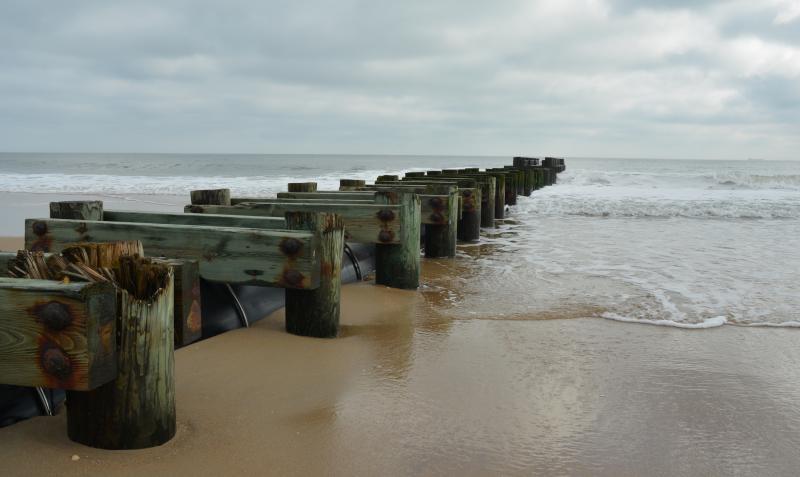Rehoboth stormwater task force focuses on funding
After months of discussion, a Rehoboth Beach task force created to examine the need for a stormwater utility has reached a consensus on a billing method that would see the typical residential property pay more than $400 a year, while nonresidential properties could pay thousands.
Rehoboth has been moving toward the creation of a stormwater utility for years. In 2018, through a Resilient Communities Partnership Grant, Rehoboth analyzed impervious surface coverage; the study showed an increase in impervious surface area in Rehoboth due to the redevelopment of residential properties.
In March 2020, the city hired AECOM, an international infrastructure consulting firm, to assess funding levels and develop options for addressing shortfalls, and assist in developing a stormwater utility. Earlier this year, the task force was formed, with the group meeting monthly ever since.
According to a chart presented during a Nov. 1 meeting, beginning in 2023, the city has about $5.6 million worth of capital expenses over the next four years. The same information also shows an average of about $670,000 per year in operations and maintenance during that time frame.
During that meeting, AECOM engineer Christine Estes presented two different funding options – equivalent runoff units or stormwater billing units.
For the ERU, Estes said, the unit is typically derived from the mean impervious surface area of a residential single-family detached property, which in Rehoboth’s case is roughly 3,000 square feet. Tiers can be used to adjust the fee, she said.
For the SWBU, the unit is not based on the median value of impervious area, but rather a set impervious surface size, usually smaller than an ERU. In Estes’ example, the SBWU unit was 500 square feet, but it can be adjusted, she said.
Estes said the ERU methodology is the approach that’s traditionally used across the country, but the stormwater billing unit method is becoming more popular because impervious surface data is easier to determine through improved GIS mapping.
In both cases, residential properties would pay about $400 annually to begin with, while nonresidential properties would pay thousands because they potentially have much more impervious area. A 5% increase in the annual bill was also added for the out years. Ultimately, the task force went with SWBU because the method didn’t use tiers, and members thought it would be easier to implement.
Under the recommended option, and for the purposes of discussion, the billing unit was set at 500 square feet. Under that scenario, the annual cost for a typical residential property with 3,000 square feet of impervious surface would be $402 in 2023 and $489 by 2027.
Without getting into specifics, but using real-life examples throughout the city, nonresidential properties could face thousands, if not tens of thousands of dollars in stormwater utility bills per year. For example, a large commercial property with almost 286,000 square feet of impervious surface would have 571 billing units, which would mean an annual rate of about $38,000.
There was some discussion regarding the utility funding 100% of capital improvements and operations and maintenance, or if it should just pay for capital improvements, with operations and maintenance being funded through the city’s general fund. Not all task force members agreed, but a majority agreed the utility should fund it all.
The task force is slated to resume its discussion Tuesday, Dec. 6, during which the group is expected to finalize its recommendations to city commissioners. The expectation is that something will be in place for the fiscal year that begins April 1, 2024.
Chris Flood has been working for the Cape Gazette since early 2014. He currently covers Rehoboth Beach and Henlopen Acres, but has also covered Dewey Beach and the state government. He covers environmental stories, business stories and random stories on subjects he finds interesting, and he also writes a column called Choppin’ Wood that runs every other week. He’s a graduate of the University of Maine and the Landing School of Boat Building & Design.





















































